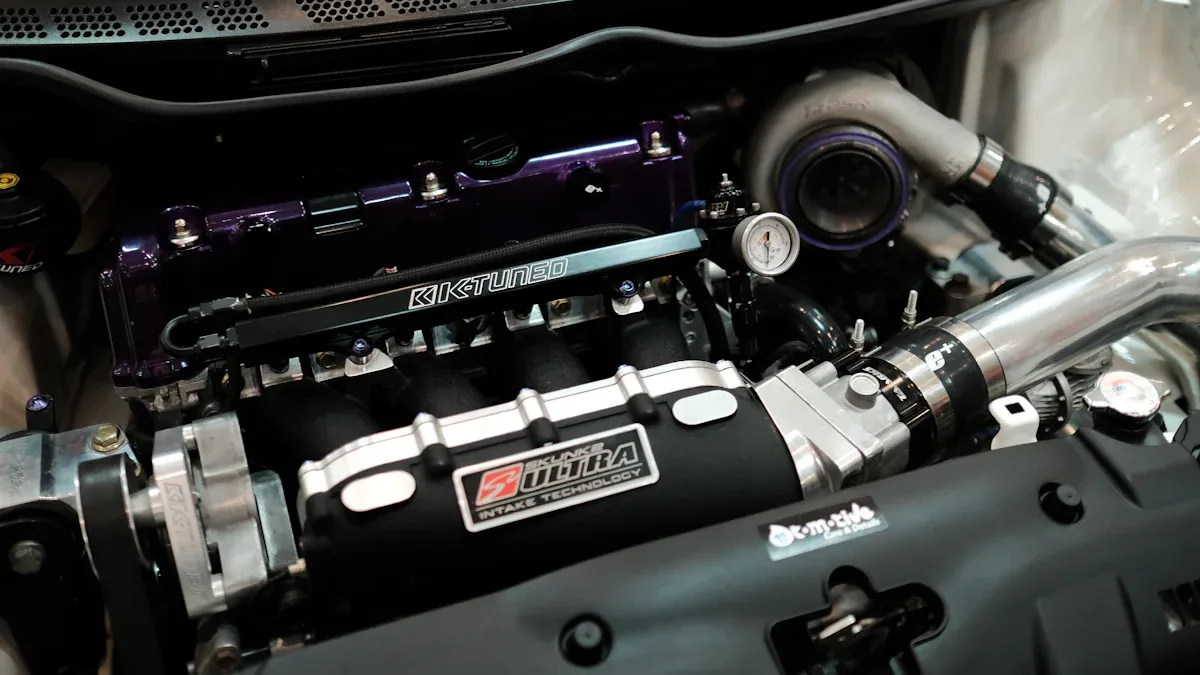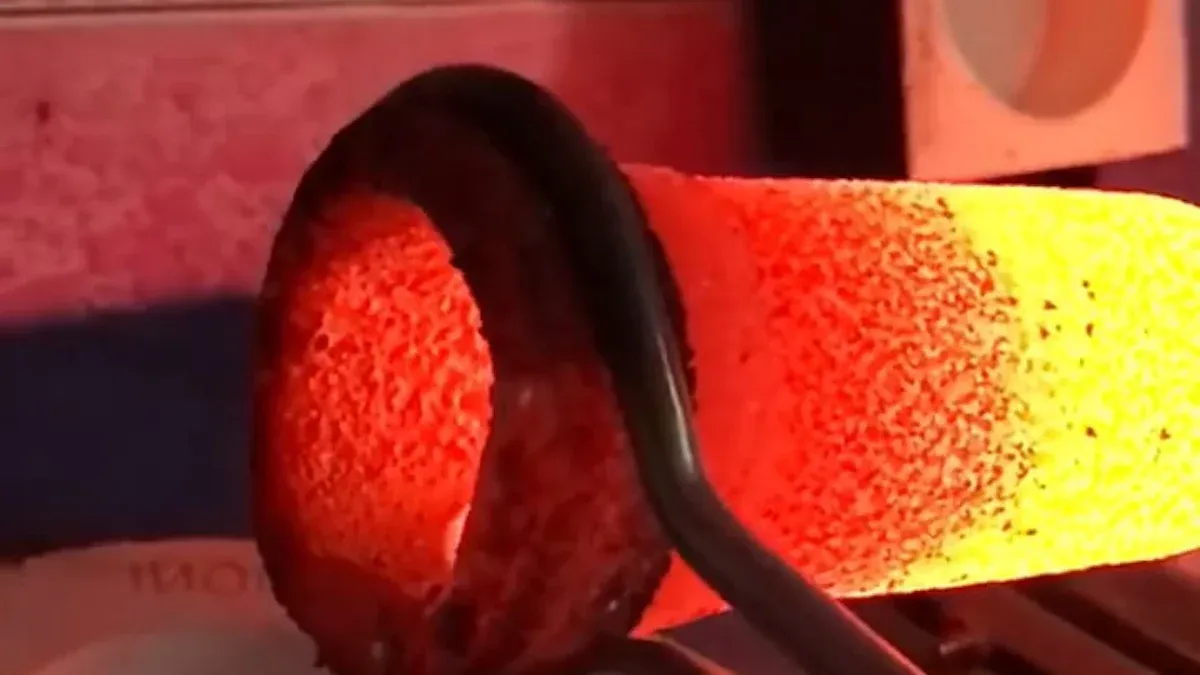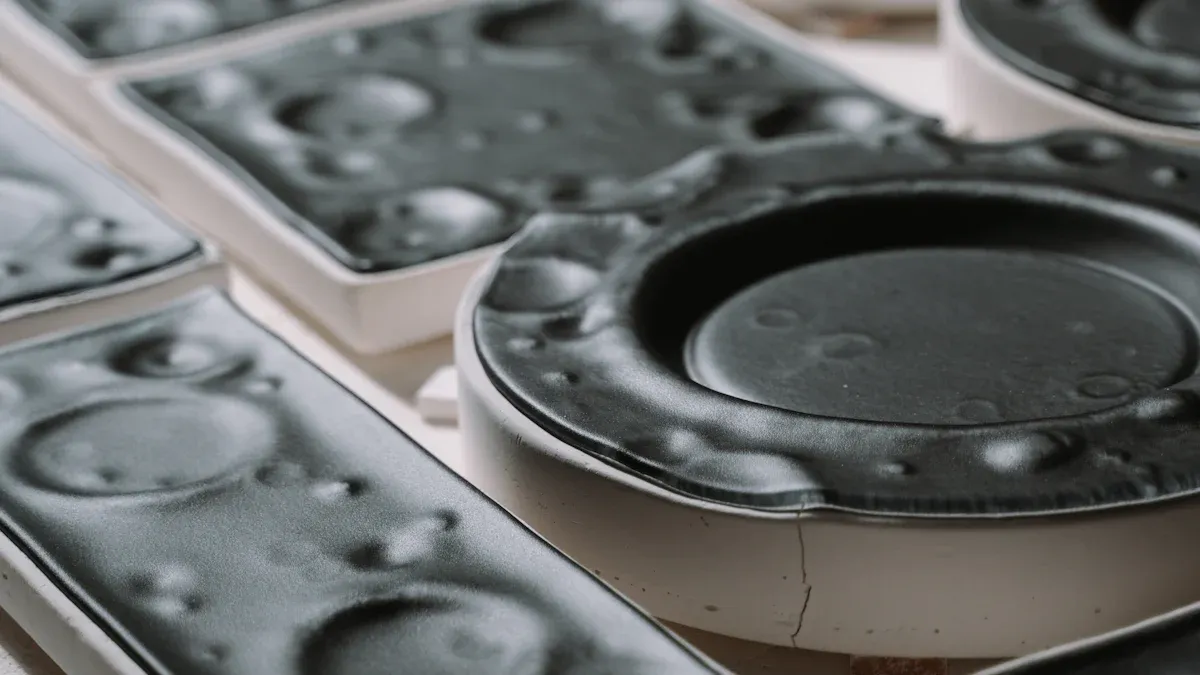
When choosing between injection molding and die casting, you must consider the cost differences. Tooling costs often dominate these decisions. They include the expenses for creating molds and preparing tools for production. In manufacturing, these costs can significantly impact your budget. Understanding the tooling costs breakdown helps you decide which process suits your needs. It ensures you balance quality, efficiency, and affordability for your project.
Plastic injection molding is a manufacturing process used to create parts by injecting molten plastic into a mold. This method is highly efficient for producing large quantities of identical items. The process begins with heating plastic pellets until they melt. The molten plastic is then injected into a mold cavity under high pressure. Once the material cools and solidifies, the mold opens, and the finished part is ejected.
This technique is ideal for creating small, intricate parts with high precision. It works well for products like medical devices, automotive components, and consumer goods. Plastic injection molding offers excellent dimensional accuracy and surface finish. However, it often requires additional post-processing steps, which can increase costs for smaller production runs. Despite this, it remains a cost-effective choice for high-volume manufacturing.
Die casting is a process used to produce metal parts by forcing molten metal into a steel mold under high pressure. It is commonly used for non-ferrous metals like aluminum, zinc, and magnesium. The process involves melting the metal, injecting it into a mold, and allowing it to cool and solidify. Once the part hardens, the mold opens, and the part is removed.
Die casting is known for its ability to produce parts with thin walls, smooth surfaces, and excellent dimensional accuracy. It is particularly efficient for creating larger, simpler parts in high volumes. Compared to metal injection molding, die casting is up to 30% cheaper for large production runs. It also has faster production rates due to fewer post-processing steps. This makes it a preferred choice for industries like automotive, aerospace, and electronics.
| Feature | Metal Injection Molding (MIM) | Die Casting |
|---|---|---|
| Cost | Higher initial costs. | Up to 30% cheaper. |
| Speed | Slower due to post-processing. | Faster overall. |
| Material Types | Advanced metals like titanium. | Non-ferrous metals. |
| Part Complexity | Small, intricate parts. | Larger, simpler parts. |
| Production Volume | High-volume intricate parts. | High-volume larger parts. |
By understanding the differences between plastic injection molding and die casting, you can choose the right process for your project. Each method has unique strengths, making them suitable for different applications.

When you consider injection molding, tooling costs often represent a significant portion of your initial investment. These costs include designing, manufacturing, and testing the mold. The complexity and size of the mold play a major role in determining the overall expense. A more intricate design requires additional labor and materials, which increases costs. On the other hand, simpler molds reduce these expenses.
Material selection also impacts the cost of tooling. Steel, commonly used for molds, can vary in price depending on its grade and durability. High-quality steel molds last longer but come with a higher upfront cost. For smaller production runs, this might not be cost-effective. However, for larger runs, the durability of steel molds can save you money in the long term.
Production volume is another critical factor. Larger production runs lower the per-unit cost due to economies of scale. Smaller runs, however, increase the cost per part, making the process less economical. Additionally, injection molding involves tooling and part costs, production rates, and cycle times. These elements together determine the overall cost of the process.
| Factor | Description |
|---|---|
| Tooling Costs | Includes design, manufacturing, and testing of the mold. |
| Complexity and Size | Larger and more complex molds increase costs; simpler designs reduce expenses. |
| Material Selection | Steel prices significantly affect mold costs. |
| Production Volume | Larger runs lower per-unit costs; smaller runs increase them. |
In die casting, tooling costs also form a substantial part of your initial investment. The process requires molds made from hardened steel, which can withstand the high pressures and temperatures involved. These molds are more expensive to produce compared to those used in injection molding. However, they last longer, making them a better choice for high-volume production.
The complexity and size of the mold influence the cost as well. Larger molds or those with intricate designs require more material and labor, driving up expenses. Simpler molds, in contrast, are less costly to produce. Material selection plays a role here too. The type of metal used in the process can affect the overall cost of tooling.
Production volume is crucial in die casting. High-volume production spreads the tooling cost over a larger number of parts, reducing the per-unit cost. For smaller production runs, the high initial tooling cost can make die casting less economical. However, the faster production rates and fewer post-processing steps in die casting can offset some of these costs.
| Factor | Description |
|---|---|
| Tooling Costs | Includes design, manufacturing, and testing of the mold. |
| Complexity and Size | Larger and more complex molds increase costs; simpler designs reduce expenses. |
| Material Selection | The type of metal impacts tooling costs. |
| Production Volume | Larger runs lower per-unit costs; smaller runs increase them. |
By understanding the tooling costs breakdown for both injection molding and die casting, you can make an informed decision. Each process has unique cost factors that suit different production needs. Evaluating these factors helps you choose the most cost-effective option for your project.

Injection molding offers a cost-effective solution for high-volume manufacturing. Once the mold is created, the cost of producing each additional unit decreases significantly. This is because the fixed costs, such as mold creation and setup, are distributed over a larger number of parts. For example, if you produce thousands of units, the cost per part becomes much lower compared to other manufacturing methods.
The process also benefits from economies of scale. As production scales up, the efficiency of the manufacturing process improves. This allows you to produce parts at a fraction of the cost compared to alternative techniques. Although the initial mold cost can be high, it is quickly offset by the lower cost of producing additional units. Over time, this results in significant long-term savings.
Injection molding is particularly efficient for smaller, intricate parts. The quick cycle times and relatively fast mold changes further enhance its cost-effectiveness. However, for smaller production volumes, the high upfront tooling costs may make this process less economical.
| Factor | Description |
|---|---|
| Efficiency in production | Producing additional units becomes cheaper after the mold is created. |
| Economies of scale | Larger production volumes reduce per-unit costs. |
| Initial mold cost | High upfront cost, but compensated by lower costs over time. |
| Long-term savings | Significant cost reductions for high-volume production. |
Die casting involves higher initial tooling costs compared to injection molding. The molds used in this process must withstand extreme temperatures and pressures, which requires durable materials like hardened steel. This durability makes die casting molds more expensive to produce. However, they last longer, making them suitable for high-volume production.
The per-part cost in die casting is generally higher due to the energy required to melt and inject metal. Despite this, the process offers faster cycle times for large volumes. This efficiency can help offset some of the higher costs, especially when producing simpler, larger parts. For smaller production volumes, the high initial tooling costs may make die casting less economical.
Die casting is ideal for manufacturing metal parts with excellent dimensional accuracy and smooth surfaces. It is particularly efficient for industries like automotive and aerospace, where high production volumes justify the initial investment.
| Factor | Description |
|---|---|
| Tooling costs | Higher due to the need for durable molds. |
| Per-part cost | Higher because of energy-intensive processes. |
| Cycle times | Faster for large volumes, improving efficiency. |
| Suitability | Best for high-volume production of metal parts. |
Several factors influence the costs and processes in both injection molding and die casting. Understanding these factors can help you make informed decisions for your manufacturing needs.
Tip: To optimize costs, consider the material, mold design, and production volume during the planning stage. This ensures you select the most cost-effective process for your project.
By evaluating these factors, you can choose the right manufacturing process for your needs. Injection molding and die casting each have unique strengths, making them suitable for different applications.
Injection molding is the ideal choice when you need to produce lightweight, intricate parts in large quantities. This process excels in creating components with complex designs, such as medical devices, consumer electronics, and automotive interior parts. The ability to use engineering-grade thermoplastics allows you to achieve high strength and durability while keeping the product weight low.
One of the key advantages of injection molding is its cost efficiency for high-volume production. After the initial tooling costs, the per-unit price drops significantly. This makes it a great option for projects requiring thousands or even millions of identical parts. Additionally, injection molding eliminates the need for secondary operations like painting or assembly, as you can incorporate features like color and texture directly into the mold.
| Advantage | Injection Molding | Die Casting |
|---|---|---|
| Piece Part Prices | Lower after initial tooling costs | Higher due to longer cycle times |
| Secondary Operations | Eliminated (e.g., coloring before molding) | Required (e.g., painting, assembly) |
| Product Weight | Reduced significantly | Heavier due to metal |
| Material Reusability | High (thermoplastics can be reprocessed) | Low (metals require re-smelting) |
If your project demands flexibility in design, injection molding offers greater freedom compared to die casting. Thermoplastics can be molded into intricate shapes that metals cannot achieve. This process also supports material reusability, making it an eco-friendly option for sustainable manufacturing.
Tip: Choose injection molding when you need lightweight, complex designs with high production volumes. It’s especially effective for products requiring chemical resistance and long lifespans.
Die casting is the preferred method for manufacturing metal parts that require high strength, precision, and heat resistance. This process is particularly effective for creating components like engine parts, gears, and housings used in the automotive and aerospace industries. Metals like aluminum, zinc, and magnesium are commonly used in die casting due to their excellent mechanical properties.
You should consider die casting when your project demands superior dimensional accuracy and consistency. The high-pressure injection and rapid cooling processes ensure that each part meets tight tolerances, making it ideal for high-complexity parts. Additionally, die casting minimizes material waste, which reduces costs and supports eco-friendly production.
| Advantage | Die Casting | CNC Machining |
|---|---|---|
| Precision | Achieves tight tolerances | May not consistently match precision |
| Efficiency | Highly efficient in mass production | Longer processing times |
| Material Utilization | Minimizes waste, eco-friendly | Generates more waste due to removal |
Die casting also offers faster production rates for large volumes, making it a cost-effective choice for mass production. While the initial tooling costs are higher, the durability of the molds ensures long-term savings for high-volume projects.
Note: Opt for die casting when you need durable, precise metal parts in large quantities. It’s the go-to process for industries requiring high-performance components.
Understanding the cost differences between injection molding and die casting helps you make better manufacturing decisions. Injection molding works best for lightweight, intricate designs, while die casting excels in producing durable metal parts. Tooling costs play a critical role in both processes, influencing your initial investment and long-term savings.
Recommendation: Choose injection molding for high-volume plastic parts with complex designs. Opt for die casting when you need precise, high-strength metal components. Evaluating your project’s material, design, and production needs ensures you select the most cost-effective process.
Injection molding has lower per-unit costs for plastic parts after the initial tooling investment. Die casting, on the other hand, involves higher tooling costs but is more cost-effective for high-volume metal part production. Your choice depends on material and production needs.
Injection molding works better for small runs if you use simpler molds. Die casting becomes less economical for small runs due to its high tooling costs. Evaluate your budget and production volume to decide the best option.
Yes, you can reuse molds in both processes. Injection molding molds last for thousands of cycles, while die casting molds are more durable and can handle higher pressures. Proper maintenance extends their lifespan.
Material choice directly impacts costs. Plastics used in injection molding are cheaper than metals used in die casting. However, metals offer higher strength and heat resistance. Choose materials based on your product’s requirements and budget.
Die casting is faster for high-volume production due to its quick cycle times and minimal post-processing. Injection molding also scales well but may require additional steps for intricate designs. Consider your production speed needs when choosing.
Tip: Always balance cost, material, and production speed to select the most efficient process for your project.